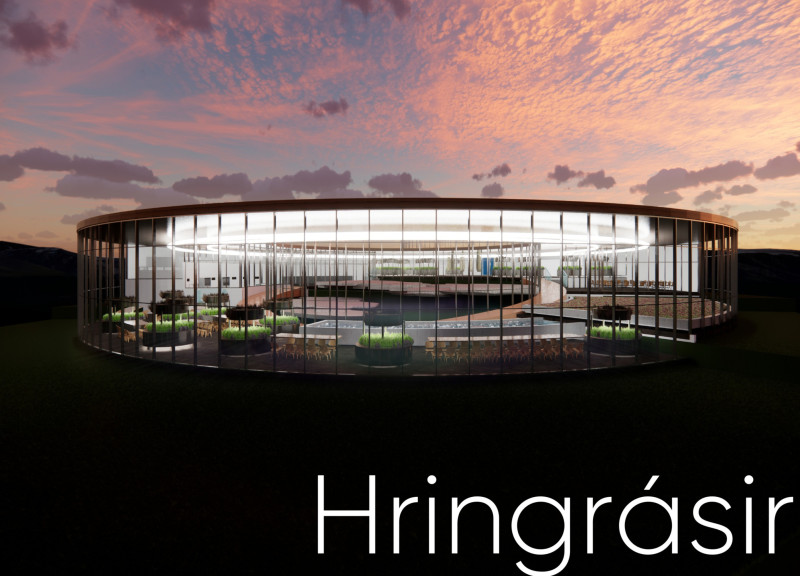5 key facts about this project
Hringrásir is a project that focuses on cycles and seasons, connecting deeply with its natural surroundings. Located in an area with geothermal resources, the design serves as a space for food preparation and community interaction. It emphasizes the relationship between human activities and the environment, aiming to enhance understanding of ecological systems.
Hot Spring Oven
At the heart of the design is the Hot Spring Oven, which harnesses geothermal energy to cook various foods, including breads, skyr, meats, and fish. This cooking facility is not just a practical feature; it also draws visitors by showcasing how local resources can be used in a sustainable way. The method of slow cooking highlights a commitment to both quality and environmental care.
Water Management System
The project includes an efficient water management system. Hot spring water is used to warm farming areas and flows through the internal courtyard before returning to the edible water garden. This cycle supports sustainability by controlling temperature and creating a visual experience. In the water garden, plants help purify the water by filtering out salts and minerals, contributing to a balanced ecosystem that benefits both aquatic life and human users.
Waste Management and Mycelium Technology
Another innovative aspect is the waste management system that processes kitchen waste using funispor. This mycelium breaks down organic materials and produces mushrooms. Such a system reduces waste and replenishes nutrients, reinforcing a sustainable approach to food production. This practical application of mycelium technology emphasizes the importance of resource efficiency in achieving sustainability.
Aquaponics and Community Engagement
Incorporating aquaponics, planters use fish-enriched water to grow crops. These plants begin their growth phase in nursery greenhouses and are then transported to the main building for harvest. This setup encourages involvement from both kitchen staff and visitors in the food production process. Such interaction promotes learning about sustainable practices and the connections between farming and ecology.
As water flows through the garden, surrounded by vibrant plant life and fish, the design illustrates a strong bond with the natural environment. This connection creates a rich sensory experience for visitors and an opportunity to engage with ecological systems.























































